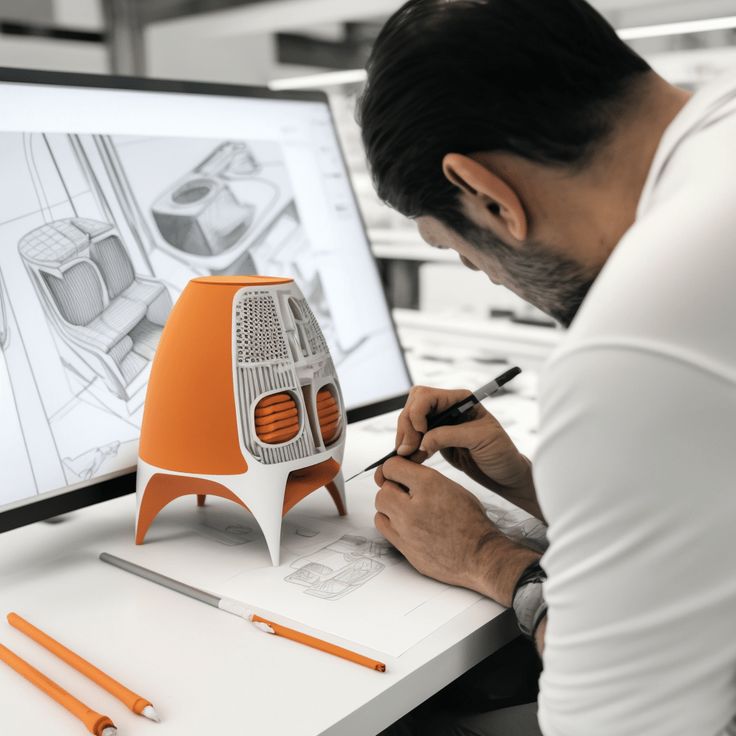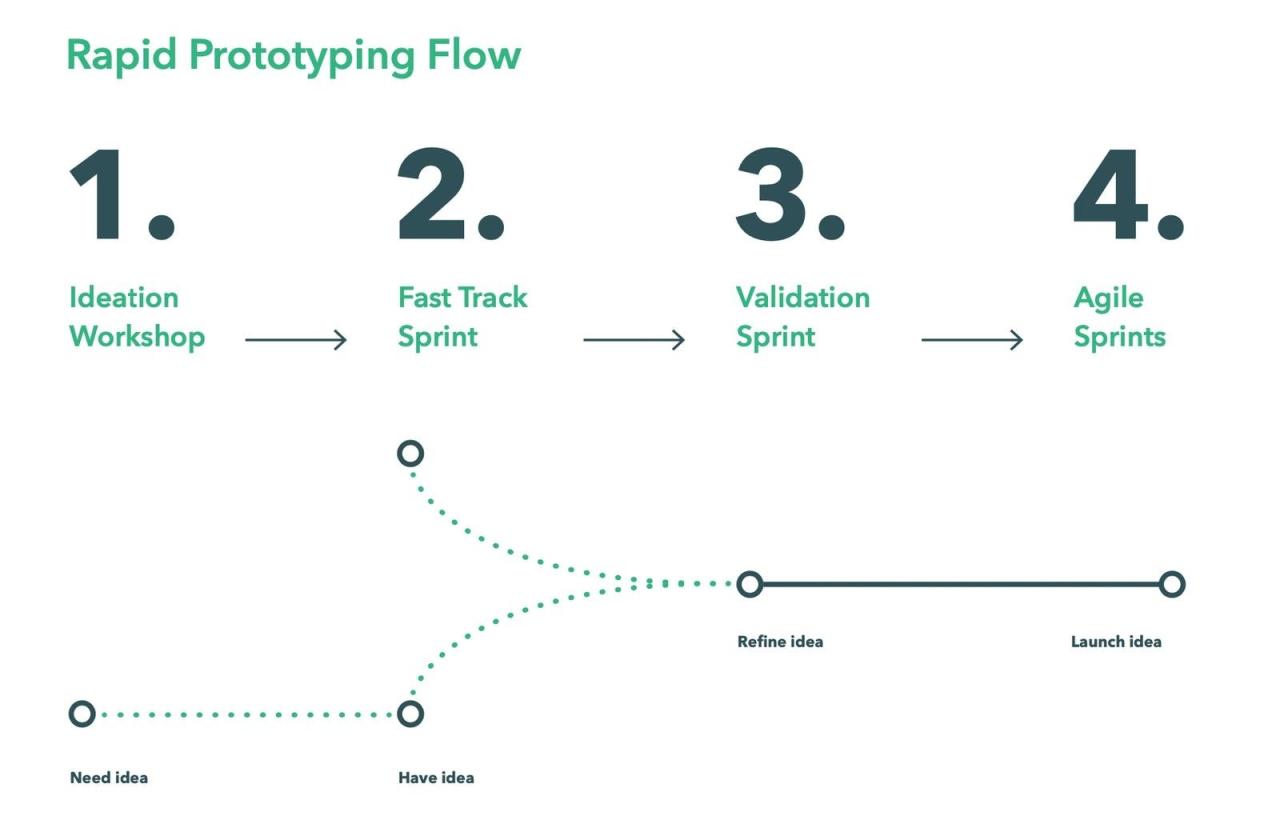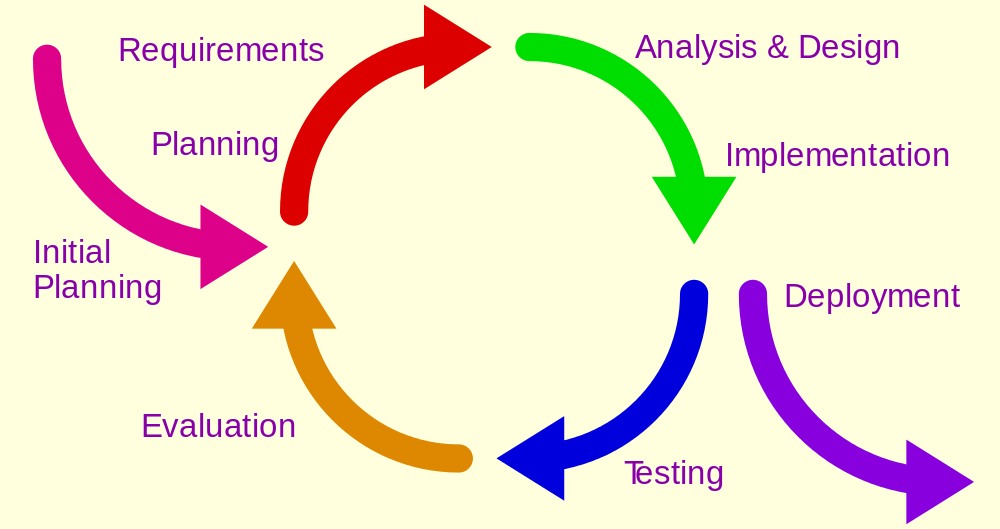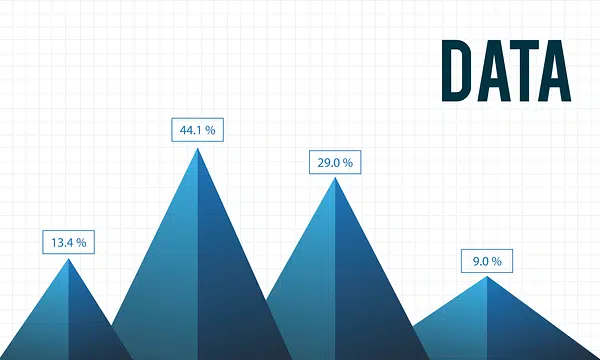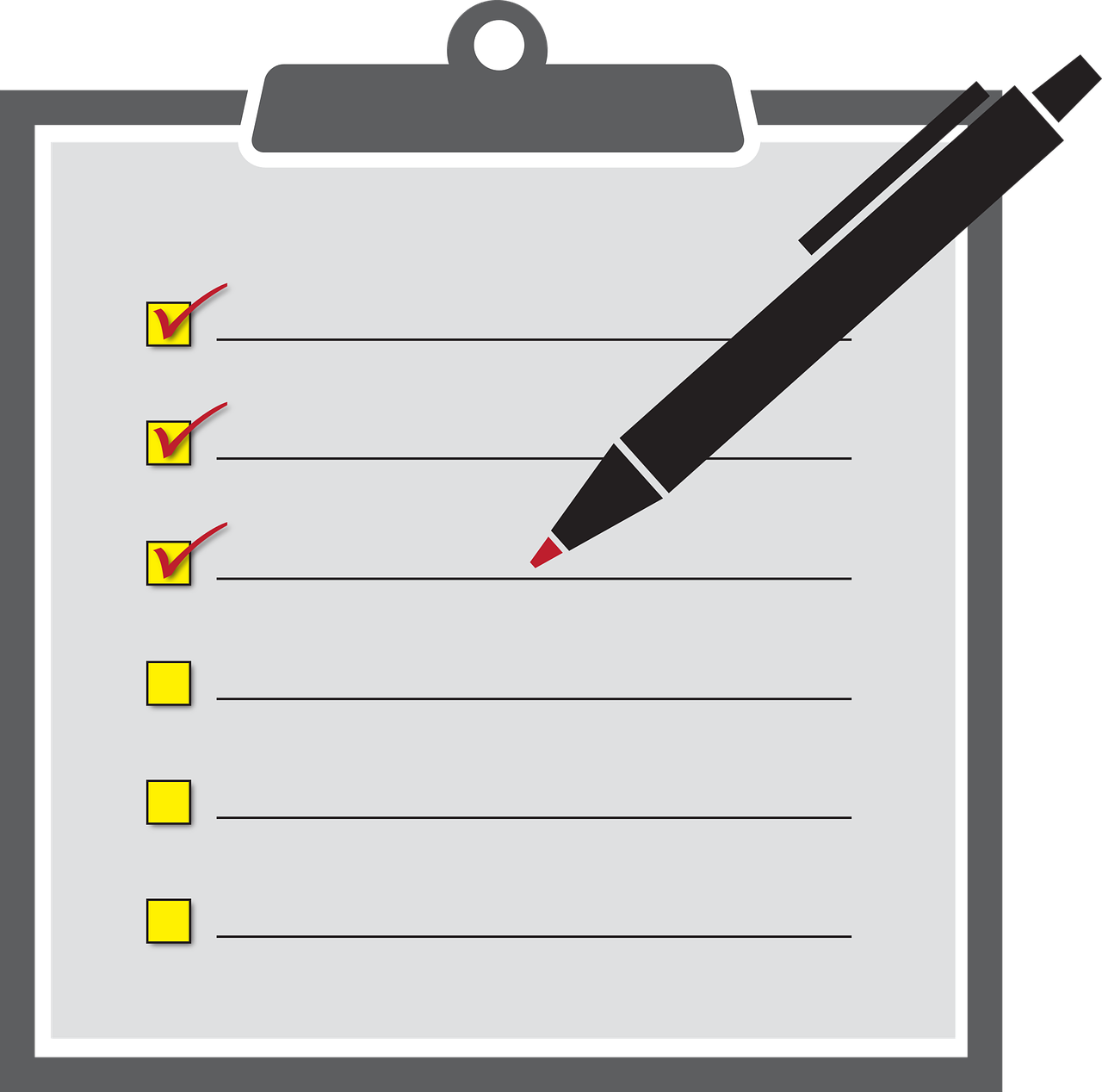In the dynamic realm of product development, where ideas quickly transform from abstract concepts into tangible experiences, the ability to rapidly test, iterate, and refine is paramount. At the core of this agile process lies design prototyping, a critical methodology that allows innovators to visualize, validate, and communicate their ideas before committing to costly full-scale development. Far more than just creating mock-ups, prototyping is about building functional representations of a design to gather real-world feedback, identify flaws early, and ensure that the final product truly resonates with its intended users. It’s the essential bridge between imagination and realization, acting as the ultimate tool for visualizing and refining innovation.
The Evolution of Design: Why Prototyping Became Crucial
To fully appreciate the indispensable role of design prototyping today, it is essential to understand the historical context of product development and the inherent limitations of approaches that lacked this crucial intermediate step.
A. Traditional Design: The “Waterfall” Dilemma
Historically, product development often followed a rigid, linear “waterfall” model. This approach emphasized detailed planning and complete specifications upfront, with each phase (requirements, design, development, testing, deployment) strictly sequential.
- Late Bug Detection: In a waterfall model, significant design flaws or usability issues were often only discovered during the late stages of development or, worse, after launch. Fixing these problems at such a late stage was incredibly expensive, time-consuming, and often led to missed market opportunities.
- Misinterpretation of Requirements: Without tangible representations, initial requirements or design specifications could easily be misinterpreted by development teams, leading to products that didn’t align with user needs or stakeholder expectations. Feedback loops were slow and infrequent.
- High Cost of Change: Any change requested late in the cycle meant significant rework across multiple phases, resulting in budget overruns and project delays. The cost of altering a design grew exponentially as development progressed.
- Limited User Input: Users typically only saw the finished product or a very basic concept. Their valuable feedback, if gathered at all, came too late to influence core design decisions effectively. This often led to products that were technically sound but failed to meet market demands or user preferences.
- Risk Aversion and Stifled Innovation: The high cost and risk associated with late-stage changes encouraged a conservative approach to design, stifling bold ideas and innovative solutions that might otherwise have emerged through experimentation.
B. The Agile Revolution and Prototyping’s Ascendance
The emergence of agile methodologies, emphasizing iterative development, continuous feedback, and rapid adaptation, perfectly aligned with and propelled the importance of prototyping. Agile principles highlight the value of “working software over comprehensive documentation” and “customer collaboration over contract negotiation.” Prototyping provides that “working software” early and often.
- Embracing Iteration: Prototyping inherently supports an iterative design process, where ideas are quickly translated into testable forms, refined based on feedback, and then iterated upon. This cycle of build-test-learn becomes continuous.
- Early Feedback Loops: Prototypes enable designers to gather actionable feedback from users and stakeholders early in the development cycle, when changes are still relatively inexpensive to implement. This proactive approach ensures the product is built right the first time.
- Reduced Risk: By validating concepts and testing assumptions with prototypes, designers can identify and mitigate risks associated with usability, functionality, and technical feasibility long before significant resources are committed to full development.
- Enhanced Communication: Prototypes serve as a universal language. They make abstract ideas concrete, facilitating clearer communication among designers, developers, product managers, and end-users, ensuring everyone is on the same page.
- Fostering Innovation: The low cost and rapid nature of prototyping encourage experimentation. Designers are empowered to explore multiple solutions, test unconventional ideas, and fail fast without significant consequences, which is crucial for genuine innovation.
In essence, prototyping shifted the paradigm from a rigid, sequential process to a dynamic, user-centered, and feedback-driven approach, making it an indispensable tool in modern product design.
Core Principles and Methodologies of Design Prototyping
Effective design prototyping adheres to several core principles and leverages various methodologies, each suited for different stages of the design process and levels of fidelity required.
A. Fidelity: The Spectrum of Detail
Fidelity in prototyping refers to how closely a prototype resembles the final product in terms of visual design, interactivity, and functionality. It exists on a spectrum, from low-fidelity to high-fidelity.
- Low-Fidelity Prototypes: These are quick, inexpensive, and basic representations.
- Purpose: Primarily for concept validation, early user flow testing, and gathering quick feedback on core ideas.
- Examples: Hand-sketches, paper wireframes, simple click-through diagrams.
- Advantages: Extremely fast to create, easy to change, encourages focus on core functionality over aesthetics, invites more critical feedback (users feel comfortable critiquing a “rough sketch”).
- Disadvantages: Lacks visual detail, limited interactivity, not suitable for testing subtle UI/UX elements.
- Mid-Fidelity Prototypes: These offer more detail than low-fidelity but are not fully polished.
- Purpose: To refine user flows, test specific interactions, and get feedback on screen layouts and basic navigation.
- Examples: Digital wireframes created in tools like Figma or Adobe XD, basic clickable prototypes with limited visual styling.
- Advantages: Faster to create than high-fidelity, allows for more realistic interaction testing than low-fidelity, good balance of detail and flexibility.
- Disadvantages: Still lacks full visual polish, may not convey the exact “feel” of the final product.
- High-Fidelity Prototypes: These closely mimic the final product’s appearance and functionality.
- Purpose: For final user testing, stakeholder presentations, demonstrating exact user experience, and validating visual design.
- Examples: Fully interactive digital prototypes with complete visual design, animations, and near-final functionality, built with tools like Framer, ProtoPie, or even front-end code.
- Advantages: Provides a realistic user experience, excellent for detailed usability testing, effective for stakeholder buy-in.
- Disadvantages: Time-consuming to create, more expensive to change, users might focus on aesthetics rather than core functionality, can create a false sense of completion.
The choice of fidelity depends on the prototyping goal, the stage of development, and the type of feedback required.
B. Interactivity: From Static to Dynamic
Interactivity refers to how users can engage with the prototype.
- Static Prototypes: Non-interactive images or printouts. Useful for early conceptualization and discussion.
- Click-Through Prototypes: Users can click on specific areas to navigate between screens, simulating basic user flows. No actual data input or complex interactions.
- Interactive Prototypes: Allow for more complex interactions like typing into fields, dragging elements, animations, and conditional logic. These provide a much richer simulation of the final product.
C. User-Centered Approach
Prototyping is inherently a user-centered process. The core purpose is to validate design decisions with actual users, gathering their insights and incorporating them iteratively.
- Early and Frequent User Testing: Engage target users throughout the prototyping process, from low-fidelity sketches to high-fidelity simulations.
- Observational Research: Observe users interacting with prototypes to identify pain points, confusions, and moments of delight.
- Feedback Incorporation: Systematically gather, analyze, and integrate user feedback into subsequent iterations of the prototype, ensuring the design evolves based on real-world usage.
D. Iterative Development Cycle
Prototyping thrives within an iterative development cycle. It’s not a one-time step but a continuous loop of design, build, test, and learn.
- Hypothesize: Formulate a design hypothesis or a problem to solve.
- Prototype: Build a tangible representation to test the hypothesis.
- Test: Put the prototype in front of users or stakeholders.
- Analyze & Learn: Gather feedback, identify patterns, and learn what works and what doesn’t.
- Refine & Repeat: Incorporate learnings into the next iteration of the design and prototype. This cycle continues until the design meets objectives and user needs.
The Transformative Advantages of Design Prototyping
Embracing design prototyping offers a multitude of compelling benefits that directly address the complexities and risks inherent in modern product development, ultimately leading to more successful and impactful innovations.
A. Validating Concepts and Mitigating Risk Early
One of the most profound advantages of prototyping is its ability to validate design concepts and mitigate risks at the earliest possible stage of the development lifecycle. Instead of making assumptions, designers can build tangible representations of their ideas and test them directly with target users and stakeholders.
- Uncovering Flaws Proactively: Prototypes allow teams to identify usability issues, flawed assumptions, navigation problems, or even fundamental misalignments with user needs long before significant development resources are committed. Catching these errors early drastically reduces the cost and effort required for correction.
- Reducing Development Waste: By validating ideas and rejecting less effective ones through prototyping, organizations avoid spending valuable development time and money building features or entire products that ultimately fail to resonate with users or meet market demands. This directly translates to significant cost savings and more efficient resource allocation.
- De-risking Innovation: Prototyping creates a safe space for experimentation. Designers can test novel or even unconventional ideas with minimal investment, quickly determining their viability and potential impact without risking a large-scale failure. This fosters a culture of bold innovation.
B. Enhanced User Experience (UX) and Usability
At its heart, prototyping is a user-centric practice that directly leads to the creation of superior user experiences. By involving users throughout the design process, prototypes ensure the final product is intuitive, efficient, and delightful to use.
- Iterative Usability Testing: Prototypes are perfect vehicles for continuous usability testing. Observing users interact with a prototype reveals pain points, confusions, and areas for improvement in real-time. This iterative feedback loop allows designers to refine interactions, information architecture, and overall user flow based on actual user behavior.
- Intuitive Navigation and Workflows: By testing different navigational structures and task flows with prototypes, designers can ensure that users can effortlessly achieve their goals within the product, leading to higher task completion rates and user satisfaction.
- Accessibility Considerations: Prototypes can be used to test accessibility features early on, ensuring the product is usable by individuals with diverse abilities, which is crucial for inclusive design and broader market reach.
C. Streamlined Communication and Stakeholder Alignment
Prototypes serve as a powerful visual and interactive language that bridges gaps in understanding across various teams and stakeholders, fostering greater clarity and alignment.
- Making Ideas Concrete: Abstract ideas and lengthy specifications can be challenging to grasp. A prototype, regardless of its fidelity, makes concepts tangible and immediately understandable, minimizing ambiguity and misinterpretations.
- Facilitating Constructive Feedback: When stakeholders can interact with a prototype, their feedback becomes more specific, actionable, and less subjective (“I don’t like it” becomes “I struggle to find X button here because…”). This leads to more productive discussions and effective design iterations.
- Achieving Buy-in: High-fidelity prototypes, in particular, can be incredibly effective tools for securing stakeholder buy-in and investment by providing a realistic preview of the final product’s look, feel, and functionality. This builds confidence and secures necessary resources.
D. Faster Time-to-Market
By accelerating the validation and refinement phases, prototyping significantly contributes to a faster overall product development cycle, enabling organizations to bring innovations to market more quickly.
- Reduced Rework: Identifying and fixing design flaws early through prototyping drastically reduces the amount of expensive rework needed in the development phase, which is typically the most time-consuming part of a project.
- Clearer Developer Handoff: Well-defined, high-fidelity prototypes provide developers with precise blueprints, reducing guesswork, clarifying complex interactions, and streamlining the implementation phase. Developers can start coding with confidence.
- Agile Iteration Support: The iterative nature of prototyping perfectly complements agile development methodologies, allowing design and development teams to work in parallel sprints, feeding validated designs directly into development backlogs.
E. Fostering Innovation and Creativity
Prototyping cultivates an environment where experimentation is encouraged, failures are learning opportunities, and bold ideas can flourish.
- Encouraging Experimentation: The low cost and rapid creation of low-fidelity prototypes empower designers to explore multiple alternative solutions for a given problem without fear of wasting significant resources. This freedom to experiment often leads to more innovative and unexpected solutions.
- Iterative Discovery: Each prototyping cycle provides new insights from user feedback, which can spark new ideas or reveal previously unconsidered opportunities. This iterative discovery process constantly refines and elevates the innovation.
- Building a Shared Vision: Through the collaborative process of prototyping and testing, teams build a shared understanding and vision for the product, fostering creativity and collective ownership of the design.
Key Methodologies and Tools for Modern Design Prototyping
The field of design prototyping has evolved significantly, with a rich array of methodologies and powerful digital tools now available to designers.
A. Design Sprints
Originating from Google Ventures, Design Sprints are an intense, five-day (or shorter, adapted versions) process for solving big problems and testing new ideas. Prototyping is central to the sprint.
- Day 1 (Map): Understand the problem and map the user journey.
- Day 2 (Sketch): Individually sketch solutions.
- Day 3 (Decide): Critique solutions and decide on the best ones to prototype.
- Day 4 (Prototype): Rapidly build a high-fidelity prototype of the chosen solution.
- Day 5 (Test): Test the prototype with real users and gather feedback.
This structured, time-boxed approach forces rapid prototyping and validation, quickly answering critical business questions.
B. Rapid Prototyping
This methodology emphasizes creating functional prototypes as quickly as possible, often sacrificing some fidelity for speed. The goal is to get something testable into users’ hands swiftly to gather early feedback.
- Paper Prototyping: The fastest and cheapest method. Involves drawing screens on paper, and simulating interactions by manually moving paper elements. Excellent for early concept validation.
- Clickable Wireframes: Using digital wireframing tools (see C.1) to link screens together, creating a basic interactive flow.
- Wizard of Oz Prototyping: A form of user testing where users interact with what appears to be an automated system, but a human “wizard” is actually performing the actions behind the scenes. Useful for testing complex AI or backend logic without building it.
C. Digital Prototyping Tools
Modern software tools have revolutionized the speed and fidelity with which prototypes can be created.
- Vector-Based Design & Prototyping Tools:
- Figma: A popular, cloud-based tool known for its collaborative features, allowing multiple designers to work on the same file simultaneously. Excellent for wireframing, UI design, and interactive prototyping.
- Sketch: A Mac-only vector editor widely used for UI/UX design, with a strong plugin ecosystem.
- Adobe XD: Part of the Adobe Creative Suite, offering design, prototyping, and collaboration features for web and mobile.
- High-Fidelity Prototyping & Animation Tools:
- Framer: Specializes in realistic, code-based prototypes with powerful animation capabilities, allowing designers to create highly interactive experiences.
- ProtoPie: Focuses on creating highly interactive and realistic prototypes for a wide range of devices, including IoT.
- Principle: A macOS app for animating user interfaces and creating interactive designs.
- User Flow and Wireframing Tools (Simpler):
- Miro / Mural: Online whiteboards for collaborative ideation, sketching, and basic flow mapping.
- Whimsical: Simple and fast tool for creating wireframes, flowcharts, and sticky notes.
D. Prototyping for Different Aspects
Prototyping isn’t limited to just visual UI. It can be applied to various aspects of a system:
- Interaction Prototyping: Focusing specifically on how users interact with elements (e.g., button clicks, drag-and-drop, gestures), often with micro-animations.
- Data Prototyping: Building simple data models or using mock data to test how data is displayed, filtered, or manipulated within the interface.
- Hardware Prototyping: For physical products, creating 3D printed models or basic mechanical prototypes to test form factor, ergonomics, and physical interactions.
- Voice User Interface (VUI) Prototyping: Simulating voice commands and responses for smart speakers or voice assistants.
Integrating Prototyping into the Product Development Lifecycle
Effective prototyping is not an isolated activity but is seamlessly integrated into every stage of the product development lifecycle, from initial ideation to post-launch optimization.
A. Discovery and Ideation Phase
In the very early stages, prototyping helps validate core assumptions and explore potential solutions.
- Concept Validation: Use low-fidelity prototypes (sketches, paper mockups) to quickly test radical ideas or broad conceptual directions with users. This determines if a concept is even worth pursuing.
- User Flow Mapping: Map out critical user journeys and task flows using basic wireframes or clickable prototypes to ensure logical navigation and intuitive pathways for users.
- Stakeholder Alignment: Present early prototypes to align stakeholders on the product vision and core functionalities, gaining early buy-in and consolidating expectations.
B. Design and Development Phase
As the product concept solidifies, prototyping becomes more detailed, feeding directly into development.
- UI/UX Refinement: Progress to mid and high-fidelity prototypes to refine the user interface, interaction patterns, visual design, and overall user experience. Conduct detailed usability testing.
- Developer Handoff: High-fidelity prototypes, often with detailed specifications and interaction notes, serve as the primary blueprint for developers. This ensures accurate implementation and reduces misinterpretations, streamlining the handoff process.
- Technical Feasibility Testing: For complex interactions or new technologies, build technical prototypes or proofs-of-concept (POCs) to validate that the design is technically feasible and performant before full-scale development.
C. Testing and Quality Assurance Phase
Prototypes can support comprehensive testing before the actual product is fully coded.
- Usability Testing: The primary use, where prototypes are put in front of target users to identify any remaining usability issues or areas of confusion.
- A/B Testing (Conceptual): While not live A/B testing, different prototype variations can be presented to distinct user groups to gather comparative feedback on design alternatives.
- Regression Testing (Conceptual): As prototypes evolve, re-testing previous validated flows ensures that new changes haven’t introduced regressions in usability.
D. Post-Launch and Optimization Phase
Even after launch, prototyping continues to play a role in product evolution.
- Feature Iteration: For new features or improvements post-launch, the same prototyping cycle can be used to design, test, and validate additions before development.
- Addressing User Feedback: If analytics or user support tickets reveal pain points, prototypes can be quickly created to test potential solutions before they are implemented in the live product.
- Exploring Future Concepts: For long-term strategic planning, low-fidelity prototypes can be used to explore entirely new concepts or product directions without significant investment, guiding the product roadmap.
Challenges and Best Practices in Design Prototyping
While highly beneficial, effective prototyping is not without its challenges. Understanding these and applying best practices can significantly enhance its impact.
A. Managing Fidelity and Scope Creep
One of the most common challenges is determining the right fidelity for a prototype and preventing scope creep.
- Best Practice: Choose Fidelity Wisely: Don’t always jump to high-fidelity. Start with the lowest fidelity necessary to test your current hypothesis. Increase fidelity only when specific questions require more detail.
- Best Practice: Define Scope Clearly: For each prototype, clearly define what it will and won’t include. Resist the temptation to add extra features not essential for the current learning goal, which leads to ‘prototype creep’ and wasted time.
B. Avoiding the “Fake Product” Trap
Prototypes, especially high-fidelity ones, can sometimes give stakeholders a false sense of a finished product, leading to premature expectations.
- Best Practice: Set Expectations: Clearly communicate that a prototype is a simulation, not the final product. Explain its limitations and what aspects are (and aren’t) functional or visually finalized.
- Best Practice: Focus Feedback: Guide users and stakeholders to provide feedback on the specific elements being tested, rather than on cosmetic details that are not yet finalized.
C. Technical Feasibility vs. Design Vision
Designers can create prototypes that are technically challenging or impossible to implement within given constraints.
- Best Practice: Early Developer Collaboration: Involve developers early in the prototyping process. They can provide crucial feedback on technical feasibility, performance implications, and development effort required for certain design choices.
- Best Practice: Understanding Platform Limitations: Be aware of the technical constraints of the target platform (web, iOS, Android, specific hardware). Design within realistic boundaries.
D. Managing Feedback and Iteration Overload
Gathering feedback is essential, but managing and incorporating it effectively can be overwhelming.
- Best Practice: Structure Feedback Sessions: Use a systematic approach for user testing (e.g., specific tasks, clear questions).
- Best Practice: Prioritize Feedback: Not all feedback is equally important. Prioritize based on severity of issue, frequency of occurrence, and alignment with project goals. Use a clear framework for deciding which feedback to act upon.
- Best Practice: Document Learnings: Maintain a clear record of design hypotheses, test results, key learnings, and decisions made. This creates an invaluable knowledge base for the project.
E. Tooling and Workflow Integration
Choosing the right tools and integrating them into a smooth workflow can be a challenge, especially in large teams.
- Best Practice: Standardize Tools: Where possible, standardize on a set of preferred prototyping tools across the design team to ensure consistency and easier collaboration.
- Best Practice: Integrate with CI/CD (for Code Prototypes): If using code-based prototypes, integrate them into CI/CD pipelines to automate testing and deployment of prototype versions.
- Best Practice: Design System Alignment: Link prototypes to a centralized design system. This ensures consistency with established UI components and speeds up prototyping by reusing predefined elements.
The Future Trajectory of Design Prototyping
Design prototyping is a dynamic field, constantly evolving with technological advancements and new approaches to product development. Several exciting trends are shaping its future.
A. AI-Powered Prototyping and Generative Design
Artificial Intelligence is set to revolutionize prototyping.
- Automated UI Generation: AI could generate initial wireframes or even high-fidelity UI components based on textual descriptions, user data, or existing design patterns, significantly accelerating the early stages of prototyping.
- Personalized Prototypes: AI might create personalized prototype experiences for different user segments during testing, providing more targeted feedback.
- Generative Design for UI/UX: AI algorithms could explore and generate countless design variations for a specific problem, optimized for usability or performance, pushing creative boundaries beyond human intuition.
- Automated Usability Analysis: AI could analyze user interaction data from prototypes to automatically identify usability issues, predict user behavior, and suggest improvements.
B. Real-Time Collaborative Prototyping
The trend towards real-time, cloud-based collaboration will intensify, making prototyping a truly collective effort.
- Enhanced Multi-User Editing: Tools will offer even more robust real-time co-editing capabilities, allowing designers, product managers, and even developers to work simultaneously on the same prototype.
- Integrated Feedback Loops: Collaboration platforms will embed more sophisticated, real-time feedback mechanisms directly within the prototyping environment, allowing for instant comments, annotations, and decision-making.
- Virtual Reality (VR) and Augmented Reality (AR) Prototyping: Designers will increasingly build and test prototypes in immersive VR/AR environments, especially for spatial computing applications or complex physical products, allowing for a more natural and intuitive evaluation of scale, depth, and interaction.
C. Code-Based Prototyping and Design System Integration
The gap between design and development will continue to shrink, with code playing a more central role in prototyping.
- Prototyping with Production Code: Tools like Framer and emerging platforms will enable designers to build high-fidelity prototypes using actual production-ready code components from design systems, ensuring perfect parity between design and development.
- Live Components in Prototypes: Designers will drag and drop live, interactive components from a shared design system directly into their prototyping canvas, ensuring consistency and accelerating prototype creation.
- Automated Code Handoff: The promise of automatically generating clean, production-ready code directly from high-fidelity prototypes will become more viable, further streamlining the handoff to developers and reducing implementation time.
D. Prototyping for Complex Systems and Emerging Interfaces
Prototyping will adapt to the increasing complexity of future systems.
- Voice and Conversational UI Prototyping: Specialized tools will emerge for prototyping complex voice user interfaces (VUIs) and conversational AI flows, complete with natural language understanding (NLU) simulation.
- IoT and Multi-Device Prototyping: Tools will enable designers to prototype experiences that span multiple connected devices and contexts (e.g., a smart home system, a connected car interface), simulating interactions across an ecosystem.
- Biometric and Gesture-Based Prototyping: As interfaces evolve beyond touch and voice, prototyping tools will support the simulation and testing of biometric authentication (e.g., eye-tracking) and advanced gesture-based interactions.
E. Data-Driven Prototyping and A/B Testing
Prototyping will become even more data-driven, leveraging analytics and experimentation.
- Synthetic Data Integration: Prototypes will integrate with synthetic data generators to populate realistic information, making tests more authentic without using sensitive live data.
- Built-in A/B Testing Frameworks: Prototyping platforms may offer native A/B testing capabilities, allowing designers to quickly test variations with different user segments and analyze performance metrics before development.
- Predictive Analytics for Design: Machine learning models could analyze prototype interaction data to predict user satisfaction, conversion rates, or potential usability issues, guiding design decisions before extensive human testing.
Conclusion
Design prototyping is far more than just a step in the product development process; it is a fundamental mindset that champions iteration, user-centricity, and rapid learning. By providing tangible, interactive representations of ideas at various levels of fidelity, it empowers innovators to visualize, validate, and refine their concepts before incurring significant development costs. This iterative approach is crucial for mitigating risks, enhancing user experience, streamlining communication, and ultimately accelerating time-to-market.
In an era defined by constant change and escalating user expectations, the ability to quickly test hypotheses and adapt designs is a definitive competitive advantage. As technology continues to evolve, with AI, VR/AR, and advanced code-based tools shaping the future, the methods and capabilities of prototyping will only become more sophisticated and integral. For any organization committed to building truly innovative, user-delighting products, mastering design prototyping is not just a skill—it is the indispensable blueprint for continuous innovation and sustainable success.

